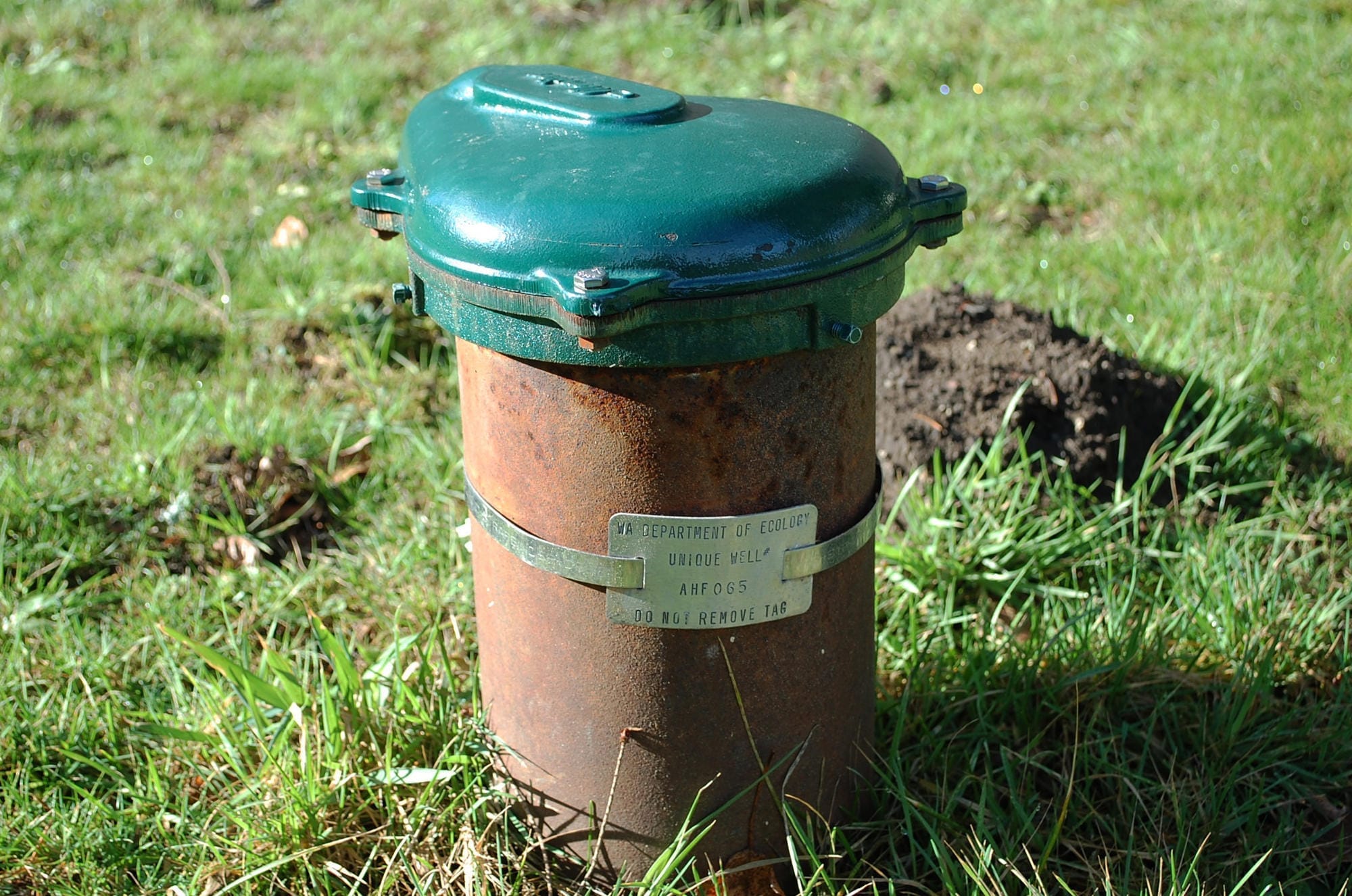If you looked into your bloodstream, you’d probably find so-called “forever chemicals.”
The name, shorthand for PFAS or per- and polyfluoroalkyl substances, may seem dramatic. But it’s not wrong. Held together by strong chemical bonds that don’t break down naturally, this family of chemicals build up over time in the bodies of people and wildlife and in the environment.
The chemicals are used in many products to resist water and staining, but studies show they have numerous detrimental health impacts, from disrupting hormones to increasing the risk of some cancers.
In recent years, state lawmakers have begun taking action. While some states moved toward blanket bans on PFAS, Washington has adopted a different approach through a program known as Safer Products for Washington. The program works to phase out PFAS product by product in five-year cycles, authorizing restrictions only when alternatives are found to be safe, economically feasible, and readily available for manufacturers.
Cleaning up these pervasive and toxic chemicals is no small task. While the program moves steadily forward, some advocates are concerned that the process won’t be fast enough to protect consumers.

“It can’t be on the consumer to try and figure out where PFAS are,” said Cheri Peele, director of government and market policy for Seattle-based nonprofit Toxic-Free Future. “This is a systemic problem, and we need regulations to solve it.”
But Department of Ecology staff say the speed and limitations of the restrictions are necessary to guide manufacturers toward ideal solutions.
“Our process is really data-driven,” said Marissa Smith, senior toxicologist for the Washington State Department of Ecology’s Hazardous Waste and Toxics Reduction program. “We have a lot of opportunities to talk to stakeholders. We have a lot of opportunities to get our regulations right, which means they work for people, they protect people, and they work for industry.”
Phasing out PFAS
Started in 2019 as part of the Pollution Prevention for Healthy People in Puget Sound Act, the Safer Products for Washington program established a process to phase out toxic chemicals from the state’s supply chains.
The program works in five-year cycles, each with four steps: prioritizing chemicals, identifying sources, determining regulatory actions and, finally, rulemaking.
Washington lawmakers have been working to phase out PFAS using this cycle since 2019, first passing restrictions on carpets and rugs, aftermarket stain and water repellents, and furniture and furnishings.
On June 4, the Department of Ecology proposed their newest restrictions. These would apply to most types of clothing, car-wash soaps and cleaning products that are manufactured, sold or distributed in Washington, as well as additional reporting requirements for PFAS use.

The Safer Products for Washington approach incentivizes movement away from PFAS through two approaches: restrictions, which the legislature stipulates can be made only if alternatives are “safe, feasible, and available”; and reporting requirements, which require manufacturers to identify and disclose where PFAS are used in their supply chain, and to begin researching alternatives.
Smith says incorporating these into a five-year cycle gives manufacturers the time necessary to identify where PFAS currently are being used and where safer alternatives could be implemented.
“We get a really long runway for figuring out what we can and can’t do,” Smith said. “We don’t want to push forward to chemicals that will similarly harm the environment for our health. We want to make sure, if we’re going to make a switch, that it’s to something safer.”
‘Safer solutions exist’
Advocates like Peele and Toxic-Free Future argue there’s room for the Department of Ecology to do even more to combat the use and impact of PFAS.
When assessing safer alternatives, the department asked manufacturers to report what they were using in place of PFAS. A February report from the Department of Ecology records difficulties with some of the data returned by manufacturers in these reports, including long response times and a lack of detail that made it difficult to determine whether the alternatives they used were in fact safer than PFAS.
The Department of Ecology report shows some manufacturers wanted to shield these alternatives as “confidential business information.”
Peele argued the Department of Ecology could use more assertive practices to get comprehensive data.
“The challenge is a lack of transparency on the part of manufacturers for what they’re using,” she said. “We’re pushing Ecology to do more manufacturer orders, make them more robust. Then when manufacturers don’t comply, enforce that.”
The department agreed that more transparency is needed, and said work is underway to get manufacturers the information they need.
“Safer Products is still a new program, and we are streamlining and refining our process to be more effective with this authority moving forward,” Smith said. “I do hear concerns about that information and transparency around that, and we do try to share as much as we can, but we also want to work with companies to ensure that they can comply with our laws and not have consequences to their business.”
Peele also argued that Ecology staff missed an opportunity to restrict PFAS in cookware while alternatives are available in stainless steel and cast iron.
Cookware is among nine categories under consideration for regulations requiring manufacturers to identify and report PFAS and alternatives in the supply chain. Peele said she supports Ecology’s current action, but is “disappointed” that it wasn’t taken sooner.
She stressed that time is of the essence to protect consumers.
“Safer solutions exist,” said Peele. “The longer we have PFAS in our products, the bigger the problem and the more expensive it’s going to be to solve.”
Smith said while there are some reasonable substitutions for PFAS-containing cookware, they didn’t have the resources to thoroughly evaluate both cookware and related chemicals like nonstick coatings.

“We couldn’t squeeze that into our timeline, so we ultimately decided that we weren’t going to try to do a rushed review of safer alternatives for cookware,” Smith said. “We wanted to take our time so that if we do propose a restriction, we can make sure that we’re not inadvertently moving to a regrettable substitution.”
Smith said that Washington’s process may seem slow, but it’s more successful than similar attempts in other states.
“Our process is really data-driven,” Smith said. “We have a lot of opportunities to talk to stakeholders. We have a lot of opportunities to get our regulations right, which means they work for people, they protect people, and they work for industry.”
‘Forever chemicals’
While scientists are still researching the health impacts of PFAS, current studies have linked them to a plethora of harmful effects, including decreased fertility, developmental delays in children, interference with the immune system and hormone levels, increased cholesterol levels and heightened risk of prostate, kidney and testicular cancers.
Water-soluble and highly mobile, PFAS are difficult to filter out once they make their way into groundwater. In the United States, 43 states have identified PFAS-contaminated groundwater sites. Washington itself has seven.
PFAS have also made their way into people and wildlife. Studies estimate almost 100% of Americans have PFAS in their bloodstream.
“They are so persistent in our environment that they’re very difficult and expensive to clean up,” said Smith.
PFAS have been widely used since the 1950s. Their oil- and water-resistant properties make them extremely useful and prevalent in a wide variety of products including cookware, clothing, furniture and food containers.
“PFAs are pretty good at what they do because they’re so persistent, that means they can actually serve a lot of useful functions and products,” Smith said. “All these different products that we interact with, they all contribute to our exposure.”
She said it’s important to address PFAS at the source.
“This is an opportunity for us to stop using these chemicals before people have continued exposure before they’re released into the environment,” she said. “This is a really important opportunity for us to proactively protect our environment and make cost-effective and efficient decisions.”
Heather Trim, executive director of conservation organization Zero Waste Washington, said action is needed sooner rather than later.
“PFAS have been used in the United States for three decades or more,” she said. “It’s well overdue to get it dealt with.”
If adopted, June’s proposed restrictions would begin on January 1, 2027. A list of the current cycle’s priority products is accessible here.





